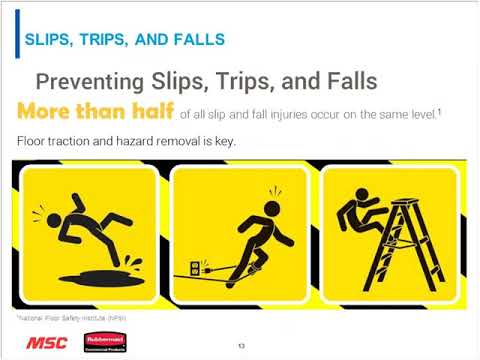When employees are working high above the ground, a single misstep can be a life-or-death situation.
That risk is one of the reasons that fall protection rules figure prominently in the Occupational Safety and Health Administration’s annual top 10 list of safety violations, meant to spur employers to correct recurring problems.
Fall-related injuries, in fact, dominate the national tally of nonfatal emergency room visits, representing 35 percent of preventable injuries in the U.S., according to the National Safety Council’s Injury Facts website.
Adequate training and taking sufficient measures to prevent falls are key to preventing such accidents on the job.
“Passive” approaches to fall protection, which don’t require effort from workers, include guardrail systems, safety nets and edge protection.
A more active tactic is a personal fall arrest system (PFAS), commonly described as a “tied off” system because it includes a full-body harness and a shock-absorbing lanyard or lifeline secured to an anchor point.
Need fall protection training? MSC offers it. Click here to find out more.
All workers should receive training by a competent person on how to correctly use a PFAS, as well as the fall hazards they will face. Those who have never worn or used a full-body harness before—or have not received training on how to use one correctly—are at risk, given that improper use can lead to a serious injury.
To avoid fall accidents, follow these six steps to properly fit your full-body harness:

In addition to understanding how to don a safety harness, workers who are using a PFAS should understand the following:
Using a Safety Lanyard
A safety lanyard, or short length of webbing or cable, typically attaches to the D-ring of a worker’s safety harness and can have a shock-absorbing feature or simply be attached as a lifeline.
When selecting a lanyard, it’s important to know your fall clearance, or the distance required for safety equipment to stop you from striking the nearest obstruction below the work surface.
To calculate your fall clearance from a rigid anchor point, you’ll need to consider factors such as deceleration distance, your height, the length of your lanyard and the distance to any obstruction. Learn how to calculate fall distance here.
Read more: Working in Confined Spaces: 5 Vital Safety Procedures for Your Employees
OSHA Fall Protection: Using an Anchor Point
According to OSHA, anchors used for attachment of personal fall arrest equipment must be independent of any anchors used to support or suspend platforms. They should also be capable of “supporting at least 5,000 pounds” per employee attached.
Unless you use an engineered anchor point, such as a device manufactured for fall protection, the selection of an anchor point should be done “under the direction and supervision of a qualified person,” OSHA says.

Setting Up a Fall Protection Plan
To set up an effective fall safety plan, employers must consider a variety of factors:
Determining what types of training you need: Not only does every workplace have different hazards, those hazards vary by employee role, experience and responsibility. Four distinct levels of safety training include programs for awareness, authorized users, competent persons and qualified persons, and your shop will likely require some if not all.
Identifying and eliminating hazards: Don’t wait until accidents happen to take action. Consider hiring an engineer to identify hazards and remove them before training employees to handle the ones that are inherent in their jobs and can’t be eliminated.
Choose the proper fall protection trainer: The qualifications you’ll need to look for may vary depending on your industry and the state or region where you operate. State safety officials may be able to make a recommendation, and the National Safety Council offers online training tools.
Document slips, trips and falls: OSHA requires employers to keep a record of serious injuries and illnesses, and complying not only helps to avoid citations but also enables businesses to identify physical hazards as well as risky behaviors, a first step in addressing them.
Decide how frequently you should offer training: OSHA considers employees trained after completion of an initial program, but the American National Standards Institute, or ANSI, recommends refresher courses at least every two years.
Tips to Amplify Your Fall Protection Plan
Here’s a collection of our best articles on fall prevention and safety:
How to Mitigate Suspension Trauma and Bolster Fall Safety
Ladder Safety Tips: What You Need to Know to Protect Your Workers
How to Choose the Right PPE: Fall Protection Harness
5 Things About Fall Protection You Need to Think About
Fall Protection Spotlight: Safety Railings and OSHA Guardrail Requirements
This article was originally published on Nov. 27, 2020.
How do you make sure employees take fall protection seriously? Tell us in the comments below.
Related Articles in Safety

High-Dexterity Work Gloves: How the Right Pair Empowers Precision and Protection
VIDEO: DEWALT Product Guide–Cordless Drill Speed, Torque, And Clutch Settings

Cold-Weather Safety Tips: Keep Workers Warm with New Innovations

Understanding the Temperature Ratings of Your Thermal Gear


